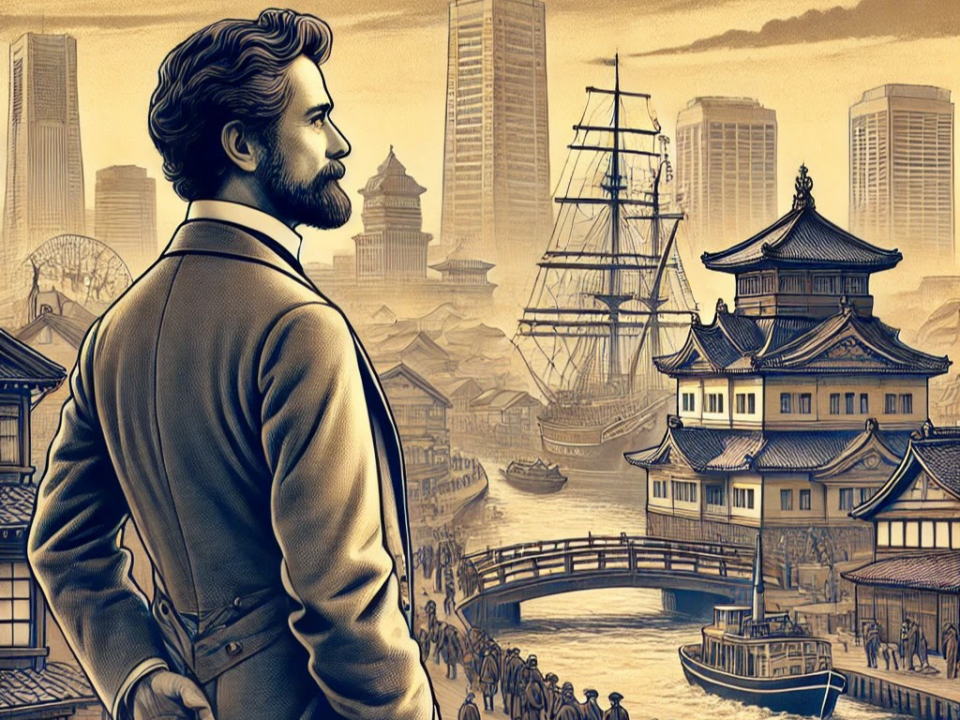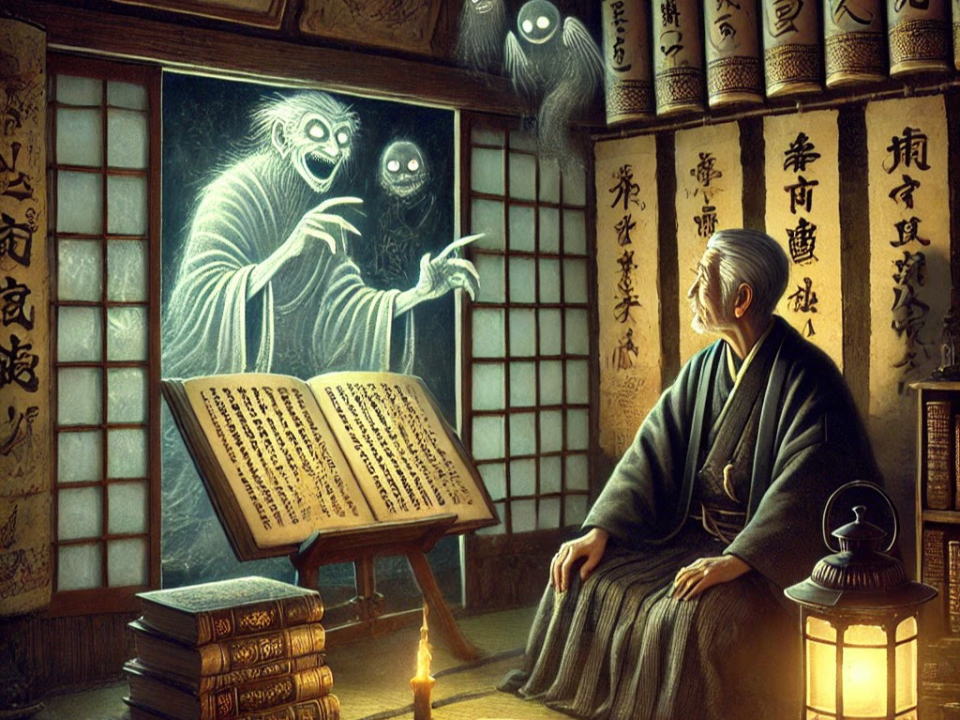
A Longing for Other Cultures Since Childhood
Lafcadio Hearn was born in Greece in 1850. He was raised by parents from very different cultural backgrounds—his father was an Irish military doctor and his mother the daughter of a Greek noble.
However, his early years were turbulent; his parents divorced when he was young, and he was subsequently taken in by relatives on his father’s side.
While he received a strict education in England, Hearn led a solitary life. After losing his sight—a great misfortune—he immersed himself in books, acquainting himself with the myths and stories of many nations.
Experiences and Disillusionment in America
At the age of 19, Hearn moved to America, beginning his career as a journalist in New Orleans.
As a reporter, he covered the lives of various cultures and ethnic groups.
He took a particular interest in the folklore of Creole culture and African American communities, publishing articles on these subjects.
However, disillusionment with the rampant racial discrimination and commercialism in American society eventually led him to yearn for experiences in other parts of the world.
The Emergence of an Interest in Japan
By the late 1880s, Hearn’s fascination with Eastern cultures had grown considerably.
He read extensively about Japan and soon became captivated by the country’s unique spirituality and mysterious cultural traditions.
In Western society at that time, Japan was seen as an exotic nation newly opened to the world—a mystique that deeply enchanted him.
The Decision to Go to Japan
In 1890, Hearn received an assignment from the American publisher Harper’s Magazine to write about Japan.
Seizing this opportunity, he resolved to make the journey.
At the age of 40, he set off for the Japan he had long admired.
First Impressions of Japan

Hearn arrived in Yokohama in April 1890.
Although Japan was in the midst of rapid modernization following the Meiji Restoration, traditional customs and cultural practices were still vibrantly present.
He was immediately struck by the orderly streets, the politeness of the people, and the overall serene pace of life.
Life in Matsue
Hearn went on to work as an English teacher at a middle school in Matsue, Shimane Prefecture (now known as Matsue Kita High School).
Matsue, a quiet castle town that still retained the charm of the Edo period, embodied the “old, good Japan” that he had long been searching for.
Life in Matsue was like a dream come true for him.
As he wandered the town observing daily life, he delved deeply into traditional Japanese culture.
Through his interactions with the locals, Hearn gained a profound understanding of Japan’s spirituality and values—a perspective that would later enrich his literary works.
A Deep Affection for Japanese Culture

Hearn was especially fascinated by Japanese folklore, notably the ghost stories and supernatural creatures known as yokai.
In Matsue, he encountered many eerie tales, which he later compiled into his renowned work Kwaidan: Stories and Studies of Strange Things.
During this period, he not only deepened his knowledge of Japanese myths and legends but also laid the foundation for his future career as a writer.
Conclusion
Lafcadio Hearn’s journey to Japan was not merely a chance occurrence.
It was the culmination of a lifelong yearning for other cultures, his disillusionment with American society, and a deep, abiding interest in Japanese traditions.
Living in Matsue, immersing himself in its rich cultural heritage, and even meeting his wife, Setsu, all seemed to be guided by fate.
His life became inextricably linked with Japan, and his works continue to be read by many around the world.
The ghost stories and legends he recorded have played a significant role in introducing the allure of Japanese culture to a global audience—and their influence persists to this day.
References
https://www.hearn-museum-matsue.jp/ (Lafcadio Hearn Memorial Museum)
https://www.kankou-matsue.jp/ (Matsue City Tourism Official Site)
https://www.kyotoprize.org/laureates/lafcadio-hearn/ (Kyoto Prize Laureate Introduction)
https://www.jnto.go.jp/ (Japan National Tourism Organization)
